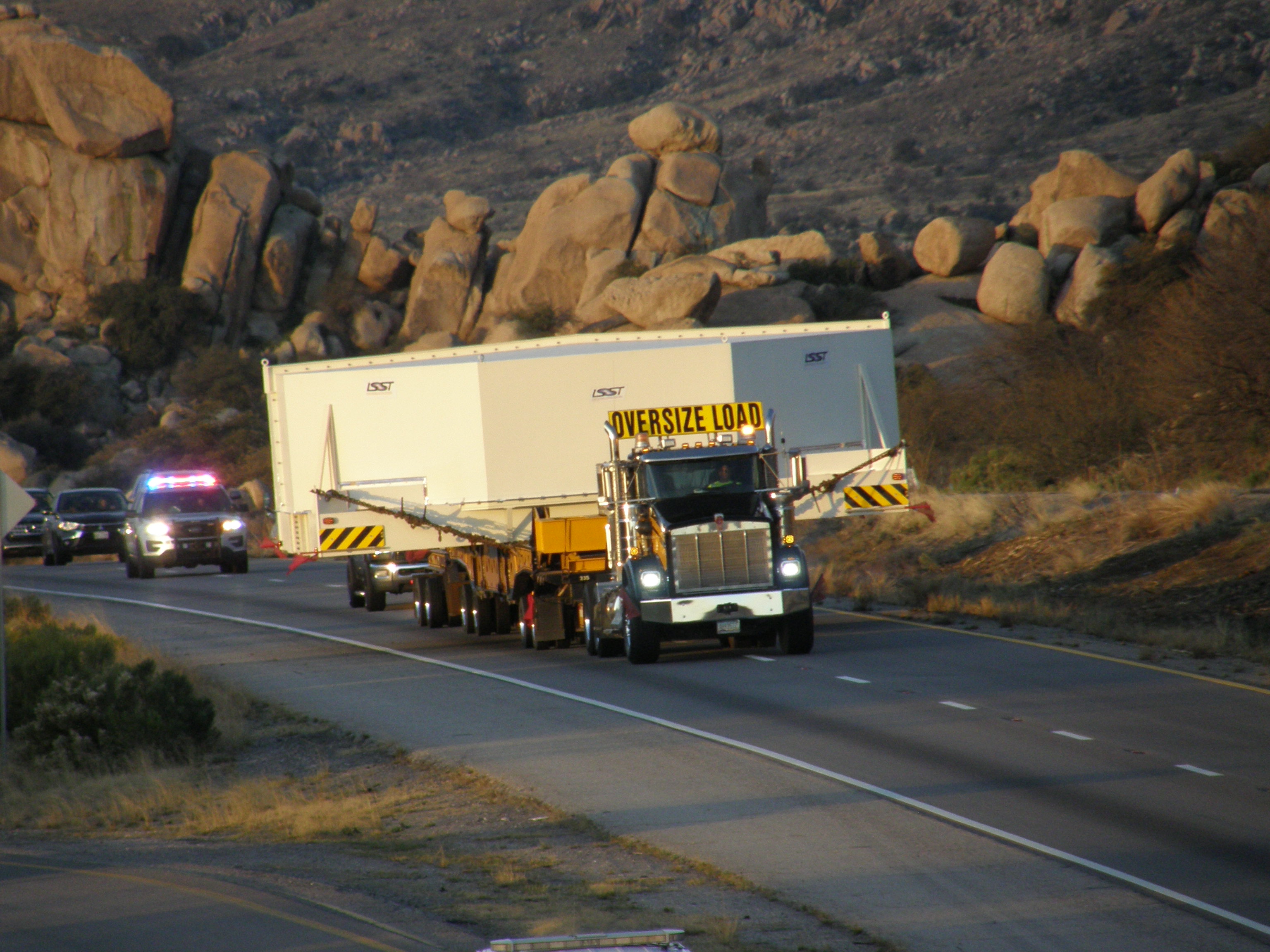
LSST Primary/Tertiary Mirror Leave Tuscon, Bound for Chile
- LSST Communications Manager
- 520-309-6195
Tucson, AZ – The 8.4-meter Primary/Tertiary Mirror (M1M3) for the Large Synoptic Survey Telescope (LSST) has begun its journey from Tucson to north-central Chile, where it will be integrated with the telescope on Cerro Pachón. The M1M3, in its secure storage container, was loaded onto a Precision Heavy Haul, Inc. transport vehicle outside the Richard F. Caris Mirror Lab at The University of Arizona in Tucson early Friday morning. It is now on a 10-day trip to the Port of Houston in Texas, where it will be loaded onto a BBC Chartering ship for a 5-week ocean voyage to Chile.
LSST, currently under construction in Chile, is an integrated system designed to conduct an unprecedented decade-long survey of the optical sky. Featuring an 8.4-meter widefield ground- based telescope, a 3200 megapixel camera, an automated data processing system, and an online public engagement platform, LSST is supported by major funding from the National Science Foundation (NSF), with additional funding by the Department of Energy (DOE) Office of Science, and private funding through the LSST Corporation.
The M1M3 was fabricated at the Richard F. Caris Mirror Lab during the period from 2008-2015 thanks to private donations, primarily from Charles and Lisa Simonyi and Bill Gates, before AURA was awarded LSST Construction funding. The mirror was then stored in a hangar near Tucson International Airport until October 2018, when it was returned to the Mirror Lab for further optical testing with new support hardware built at CAID Industries in Tucson.
Tucker Booth, LSST Telescope and Site Mechanical Engineer, supervised the departure of the M1M3 on Friday morning. Booth remarked, “A lot of people worked very hard to get to this moment. It’s exciting to have the work in Tucson finished, and to move on to the next phase.”
Edward Ajhar, the NSF Program Manager for LSST, commented, “NSF is pleased to hear that this essential and recognizable element of the telescope is officially headed to Chile. LSST will provide huge benefits not just for the astronomical community, but for the general public as well.”
Photos of the M1M3 being loaded in Tucson are available in the LSST Gallery. More information and links to LSST news stories about the M1M3 are available here.
About LSST
LSST seeks to enable science in four main areas: understanding dark matter and dark energy, cataloging the Solar System,
exploring the changing sky, and investigating the formation and structure of the Milky Way. LSST is scheduled to begin operations in 2022. More information can be found at www.lsst.org.
Financial support for LSST comes from the National Science Foundation (NSF) through Cooperative Agreement No. 1258333, the Department of Energy (DOE) Office of Science under Contract No. DE-AC02-76SF00515, and private funding raised by the LSST Corporation. The NSF- funded LSST Project Office for construction was established as an operating center under management of the Association of Universities for Research in Astronomy (AURA). The DOE- funded effort to build the LSST camera is managed by the SLAC National Accelerator Laboratory (SLAC).
The National Science Foundation (NSF) is an independent federal agency created by Congress in 1950 to promote the progress of science. NSF supports basic research and people to create knowledge that transforms the future.
About AURA
The Association of Universities for Research in Astronomy (AURA) is an international
consortium of universities and non-profit institutions that operate world-class astronomy facilities. In Chile, it administers and operates the telescopes of Cerro Tololo, Gemini South, SOAR, and in the future LSST, under a cooperative agreement with the National Science Foundation of the United States.
